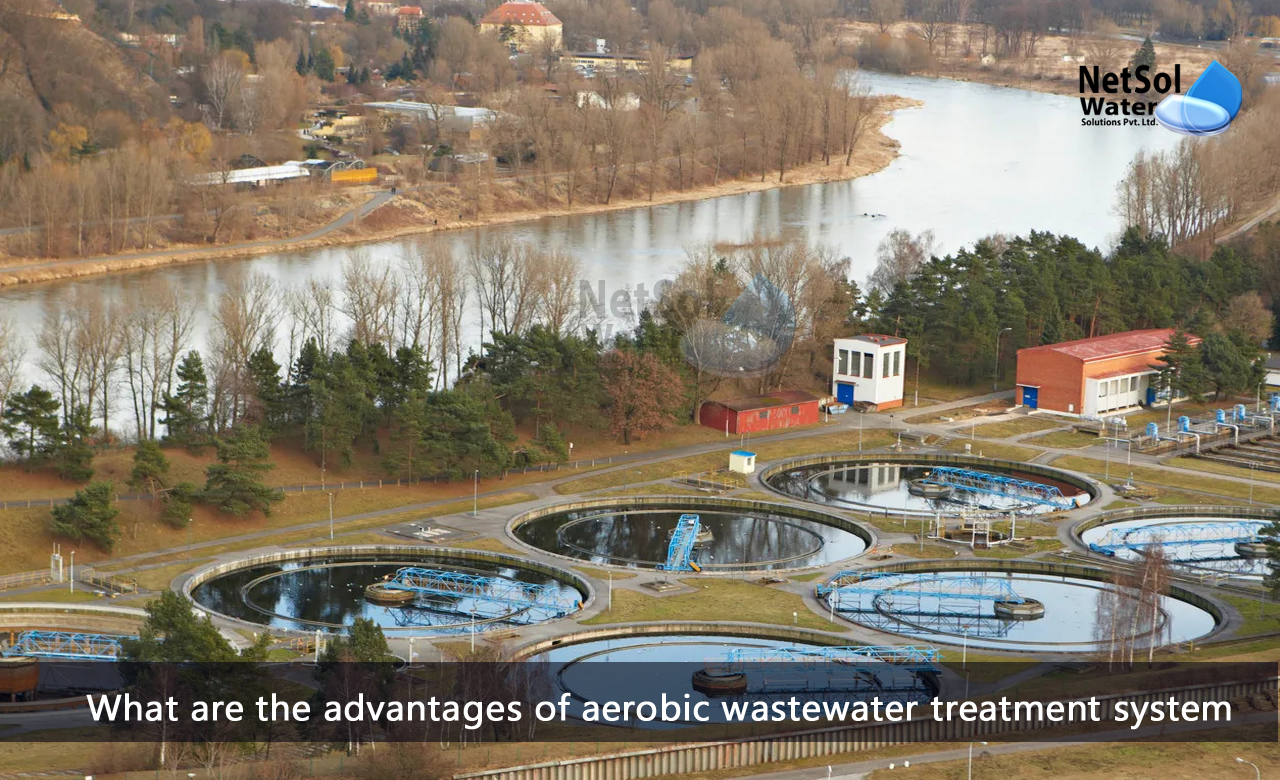In the conventional wastewater treatment process, there are three distinct steps:
• Primary treatment entails removing solids via sedimentation or flotation.
• Secondary treatment entails removing organic matter via microbial decomposition.
• Finally, tertiary treatment refers to any additional treatment that wastewater may require if reused, recycled, or discharged into the environment.
After leaving primary treatment, the primary effluent is introduced into a specially designed bioreactor, where microorganisms such as bacteria, algae, or fungi use the organic matter, for either aerobic or anaerobic wastewater treatment.
When the presence of oxygen is required, aerobic treatment is typically used to efficiently treat low strength wastewater (COD 1000 mg/L).
Let’s see how aerobic treatment is advantageous for wastewater treatment.
What are the advantages of aerobic wastewater treatment system?
Aerobic treatment is commonly used to polish industrial effluent that has already been treated anaerobically. This ensures that the wastewater has completely degraded and can be disposed of safely, in accordance with environmental regulations.
Aerobic treatment techniques are applicable in a wide range of industries, including food and beverage, chemical, and municipal.
Advantages of aerobic wastewater treatment systems
· Aerobic digestion is fundamentally based on the biological mechanism of endogenous respiration. When there isn't enough food for the biomass population, microorganisms use their own protoplasm as an energy source, lowering the sludge's volatile solids concentration.
· Aerobic treatment necessitates the provision of sufficient oxygen to support aerobic bacteria. The amount of aeration required (in increasing order) depends on whether the goal is to simply reduce odour, completely remove the oxygen demand of the organic matter, or provide enough oxygen for ammonia nitrification to nitrate.
· When compared to anaerobic treatment, the benefits of aeration include reduced odour, nitrification of ammonia to nitrate, thus potentially reducing ammonia emissions and also having a nitrogen form that is readily crop-available,but also more prone to leaching, and reduction of greenhouse gases especially methane.
Application of aerobic treatment processes
1. ASP (Activated Sludge Process),
2. Trickling Filter,
3. Rotating Biological Contactor.
Conclusion
In the last few decades, the use of bioreactors in wastewater treatment has progressed from an exotic, new technology to a standard process. A key strategy for optimizing these systems is to measure input or output gases, in order to efficiently understand and control the process.
The precise application of aerobic wastewater treatment processes is determined by factors unique to each facility, and mass flow metering is critical to understanding how to best utilize available tools, to provide an optimal treatment regimen.
How can we ?assist
Netsol Water works with a diverse range of international organizations, to address complex water and wastewater issues by strategically integrating cutting-edge wastewater treatment technology, with practical solutions.
We customize our wastewater treatment systems to meet the specific needs of our customers, at an affordable price. To meet our customers' needs, we provide fully automated and semi-automated systems.
Netsol Water is Greater Noida-based leading water & wastewater treatment plant manufacturer. We are industry's most demanding company based on client review and work quality. We are known as best commercial RO plant manufacturers, industrial RO plant manufacturer, sewage treatment plant manufacturer, Water Softener Plant Manufacturers and effluent treatment plant manufacturers. Apart from this 24x7 customer support is our USP. Call on +91-9650608473, or write us at enquiry@netsolwater.com for any support, inquiry or product-purchase related query.



